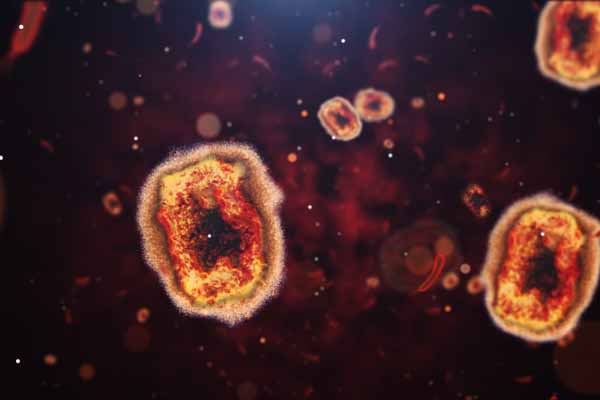
With cases of monkeypox recently reported in several countries that don’t normally have that virus – including at least one confirmed case in the U.S. – federal health authorities are advising physicians to be on the lookout for the characteristic rash usually associated with monkeypox.
A health alert from the Centers for Disease Control and Prevention (CDC) says clusters of monkeypox cases have been reported since May 14. The virus is endemic to several Central and West African countries, CDC says, and before mid-May, “cases outside of Africa were reported either among people with recent travel to Nigeria or contact with a person with a confirmed monkeypox virus infection.”
That was the case for a person diagnosed with the virus last year after traveling from Nigeria to Dallas.
However, the latest round of infections mostly comprises people who don’t have direct travel-associated exposure risks, CDC says. Several clusters of cases in England collectively included six people without a history of travel to Africa, for instance.
Human-to-human transmission of monkeypox occurs “through large respiratory droplets and by direct contact with body fluids or lesion material,” the health alert notes. Symptoms of the disease “always involve the characteristic rash,” CDC says, and “when generalized, the rash is very similar to that of smallpox including a centrifugal distribution.”
Although the rash is historically preceded by early symptoms such as fever, malaise, and headache, CDC says these symptoms may not have always occurred in the recent cases. Because of the possible absence of those symptoms, patients may present similar to other common infections like syphilis and herpes.
The agency cautions clinicians’ suspicion of a possible monkeypox case should be heightened if the rash occurs in people who:
- Traveled to countries with recently confirmed cases;
- Report having had contact with someone who has a similar-appearing rash or was diagnosed with confirmed or suspected monkeypox; or
- Are men who regularly have close or intimate in-person contact with other men, “including those met through an online website, digital application (‘app’) or at a bar or party.”
More information on the disease and the recent infections is available in the CDC health alert and on the agency’s monkeypox page for clinicians.
Last Updated On
January 05, 2023
Originally Published On
May 24, 2022